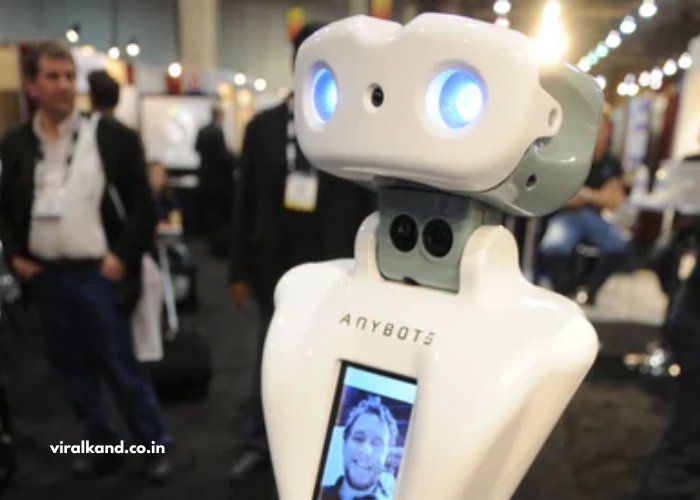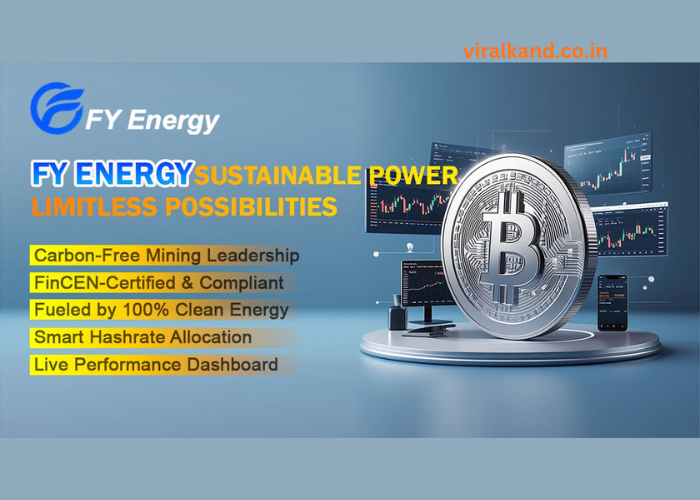The world of technology is constantly evolving, with new innovations emerging every year that promise to reshape industries, enhance human capabilities, and redefine the way we live, work, and interact. As we step into 2025, the pace of technological advancements continues to accelerate, bringing with it a wave of exciting possibilities. From artificial intelligence (AI) to sustainable energy solutions, the innovations of 2025 are expected to have a transformative impact across multiple sectors. In this article, we’ll explore some of the most exciting technology trends and innovations to watch in 2025.
1. Artificial Intelligence and Machine Learning Advancements
The Rise of Generative AI
Artificial Intelligence (AI) and Machine Learning (ML) have been among the most disruptive technologies in recent years, and in 2025, their evolution is expected to reach new heights. One of the most anticipated advancements in AI is the continued development of Generative AI. This technology allows machines to create new content, such as text, images, music, and even video, based on input data. With tools like OpenAI’s GPT models and DALL-E, Generative AI is revolutionizing creative industries, enabling personalized content creation, and improving efficiencies in design and production.
Generative AI is also expected to enhance natural language processing capabilities, allowing for more advanced human-computer interactions. This could be a game-changer in customer service, healthcare, content creation, and even in software development.
AI in Healthcare
In 2025, AI will further infiltrate the healthcare sector, not only improving diagnostics and treatment planning but also enhancing patient care. AI-powered systems will assist in predicting health conditions with higher accuracy by analyzing vast amounts of medical data. These technologies will make healthcare more personalized, with AI recommending treatments tailored to individual genetic profiles and medical histories.
Moreover, robotic surgeries powered by AI and ML will become more precise, leading to faster recovery times for patients and reduced risks during complex surgeries. AI-driven diagnostic tools will also help reduce human error and speed up disease detection, making healthcare more accessible and efficient.
2. Quantum Computing Breakthroughs
Revolutionizing Computing Power
Quantum computing, a rapidly developing field, promises to revolutionize industries by solving problems that traditional computers can’t handle efficiently. In 2025, we can expect significant advancements in quantum computing, especially in the realms of cryptography, logistics, materials science, and artificial intelligence. Quantum computers harness the power of quantum mechanics to process vast amounts of information at exponentially faster rates than classical computers.
For example, in the field of cryptography, quantum computers could crack encryption methods that are currently considered unbreakable, leading to the need for new, quantum-resistant encryption protocols. In logistics, quantum computing could optimize supply chains, improve traffic management systems, and even revolutionize weather forecasting. As more companies, including IBM, Google, and Intel, invest in quantum research, we are on the brink of witnessing its commercialization in the next few years.
Quantum Software Development
Alongside quantum hardware, the development of quantum software will also make major strides in 2025. As quantum computing becomes more accessible, companies will begin building specialized software to leverage the unique capabilities of quantum machines. These advancements will likely enable industries to tackle some of the world’s most pressing challenges, from climate modeling to drug discovery.
3. 5G and 6G Connectivity
Accelerating the Internet of Things (IoT)
The rollout of 5G technology in the past few years has already started to enhance internet connectivity, speed, and latency. In 2025, 5G will become even more widespread, facilitating seamless connectivity for a range of devices. The Internet of Things (IoT) will flourish, with billions of smart devices interconnected across homes, businesses, and cities. Everything from wearable devices to smart refrigerators and autonomous vehicles will rely on ultra-fast and low-latency networks to communicate and operate effectively.
The combination of 5G with AI, cloud computing, and edge computing will create an ecosystem where data flows freely, making real-time decision-making possible. Smart cities, in particular, will benefit from 5G’s ability to manage traffic systems, public safety, waste management, and energy consumption more efficiently.
6G and Beyond
While 5G is still being implemented in many regions, research into 6G technology is already underway. Expected to be fully realized by the early 2030s, 6G will build on the foundations of 5G and push connectivity to even greater speeds, reduced latency, and expanded device support. It will play a crucial role in applications like holographic communication, immersive virtual reality (VR) experiences, and real-time global communication.
In 2025, we will likely see early-stage trials of 6G technology in select regions, showcasing its potential for industries like entertainment, remote work, and healthcare.
4. Augmented Reality (AR) and Virtual Reality (VR)
The Metaverse: A New Digital Frontier
The Metaverse has been a buzzword in the tech world for a while now, but by 2025, it will begin to take shape as a fully-fledged digital universe. Through advancements in Augmented Reality (AR) and Virtual Reality (VR), people will be able to experience immersive digital worlds like never before. These technologies will become more integrated into daily life, transforming everything from how we shop to how we socialize.
Virtual reality will be used for more than just gaming and entertainment; it will revolutionize industries like education, real estate, and tourism. Imagine touring a historical landmark in VR or participating in a fully immersive virtual classroom. Augmented Reality, on the other hand, will continue to augment the physical world with useful digital overlays, enhancing everything from shopping experiences to navigation.
AR and VR in Healthcare
In healthcare, AR and VR are set to provide groundbreaking innovations. Surgeons will be able to use AR to overlay critical patient data on their field of view during operations, while VR will aid in medical training, allowing students to perform virtual surgeries and diagnose patients in a controlled, risk-free environment. Additionally, AR glasses will assist elderly patients with cognitive disorders by offering reminders, navigation assistance, and even virtual companions to improve their quality of life.
5. Autonomous Vehicles and Smart Transportation
Self-Driving Cars
Autonomous vehicles (AVs) have been a work in progress for many years, and 2025 is expected to be a major milestone in their adoption. Self-driving cars will become a more common sight on roads, especially in urban areas. These vehicles rely on a combination of AI, machine learning, and sensors to navigate and make real-time decisions without human intervention. In 2025, improvements in safety, AI algorithms, and regulatory frameworks will enable autonomous vehicles to be deployed on a larger scale, reducing accidents and improving traffic flow.
Self-driving trucks are also expected to revolutionize the logistics industry, reducing human error and making freight transportation more efficient. In the coming years, autonomous delivery systems, including drones and robots, will become a regular part of e-commerce, ensuring faster and more convenient deliveries.
Electric and Sustainable Transportation
As concerns over climate change continue to grow, electric vehicles (EVs) will become even more popular in 2025, with advancements in battery technology making them more affordable and efficient. The rise of smart cities will further complement the adoption of sustainable transportation options like electric bikes, electric buses, and public transportation systems powered by clean energy. These technologies will help reduce urban carbon footprints and improve air quality.
6. Biotechnology and Genetic Engineering
CRISPR and Gene Editing
Advancements in biotechnology and genetic engineering are poised to transform medicine and agriculture in 2025. CRISPR technology, which allows for precise editing of genes, has already shown incredible potential in treating genetic diseases, improving crop resilience, and advancing personalized medicine. In the coming years, CRISPR and other gene-editing tools will likely become more refined, leading to breakthroughs in treatments for previously incurable conditions such as certain types of cancer, genetic disorders, and viral infections.
Genetic engineering will also enable the creation of genetically modified organisms (GMOs) with enhanced traits such as resistance to diseases, pests, and climate change, helping to address global food security challenges.
Organ Regeneration and 3D Bioprinting
Another exciting area of biotechnology is organ regeneration and 3D bioprinting. Researchers are already experimenting with printing tissues and organs using a patient’s own cells, which could one day eliminate the need for organ transplants. By 2025, we may see significant progress in this field, offering hope for those with organ failure and reducing the burden on transplant waiting lists.
7. Blockchain and Decentralized Finance (DeFi)
Blockchain Beyond Cryptocurrencies
Blockchain technology, primarily associated with cryptocurrencies like Bitcoin and Ethereum, is finding new use cases in various industries, including supply chain management, healthcare, and real estate. In 2025, blockchain will continue to disrupt traditional business models by enabling decentralized, transparent, and secure transactions without the need for intermediaries. This could lead to more efficient systems in everything from finance to logistics, with improved traceability and reduced fraud.
Decentralized Finance (DeFi)
The rise of Decentralized Finance (DeFi) is expected to continue in 2025, providing financial services outside of traditional banks. Using blockchain technology, DeFi allows for peer-to-peer lending, borrowing, and trading without the need for centralized institutions. With its potential to democratize financial access, DeFi could revolutionize the way people in underbanked regions interact with financial systems, making services like loans and savings accounts more accessible to all.
Conclusion
The technology innovations to watch in 2025 are a mix of advancements that will enhance everyday life, disrupt existing industries, and tackle some of the world’s most pressing challenges. From AI and quantum computing to autonomous vehicles and biotechnology, the pace of innovation shows no sign of slowing down. As we enter this exciting era of technological growth, these innovations promise to transform not only the way we live but also how we think, work, and interact with the world around us. Keeping an eye on these trends will be essential for businesses and individuals alike to stay ahead of the curve in the ever-changing tech landscape.




